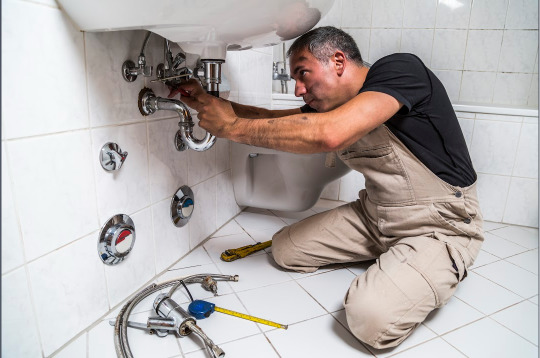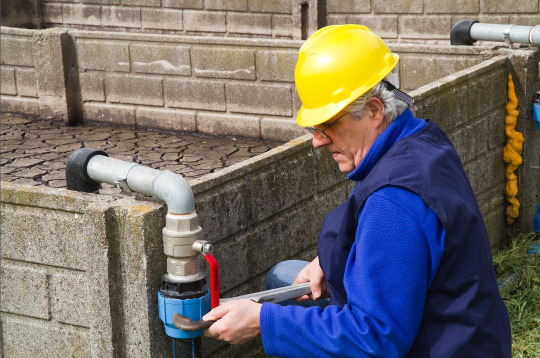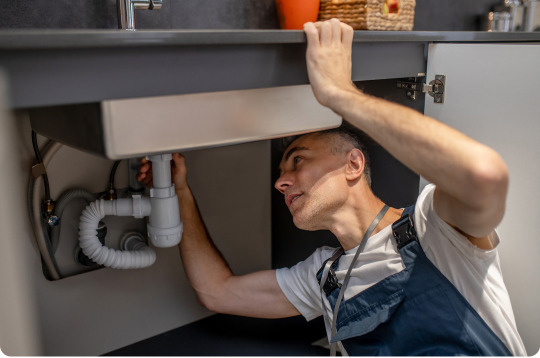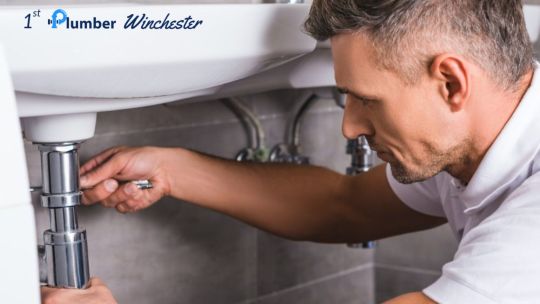#screw auger falls
Text

The Milky Way Over Screw Auger Falls in Newry, Maine - by Jonathan Zdziarski
0 notes
Text
How to Fix a Slow Draining Bathtub With a Plunger
The most common and effective way to fix a slow-draining bathtub is to plunge it with a cup-style drain plunger. A cup-style plunger has a head that resembles a bell and is also used to fix slow-draining sinks. Do not use a toilet plunger or an accordion-style plunger.
Remove the Overflow Drain CoverUnscrew the plate covering the tub overflow drain. Use a flat-head screwdriver to turn the screw counter-clockwise. Before doing so, stop the tub drain to prevent the screw from accidentally falling into the drain.
Cover the Overflow DrainLay two or three overlapping strips of duct tape or packing tape across the overflow drain. You may need to first use a towel to dry or clean the overflow flow area to help the strips create an airtight seal.
Remove the Drain StopperRemove the tub drain stopper completely and set it aside.
Add Water to the BathtubFill the bathtub with about two inches of hot water from the bathtub faucet.
Position the PlungerHold the plunger vertically and place the cup centered over the drain. The lip of the plunger must fully contact the bottom of the tub.
Plunge the Tub DrainPush the plunger down quickly and then pull it up. Keep the cup sealed to the bottom of the tub. Repeat this cycle four or five times.
Remove the PlungerRemove the plunger and watch for drainage. The water in the tub should drain out. If plunging has loosened hair or other clogs, remove them by hand before they go back down the drain.
Clear the Stopper and Drain
Pop-up and other attached bathtub drain stoppers are prone to clogging due to the narrow drainage space. Detaching the stopper and clearing clogs are often all that's needed to help the bathtub drain flow again.
Determine the type of stopper as there are many different kinds of drain stoppers.
Remove the drain stopper.
By hand or with needle-nose pliers, pull out hair that might be clogging the drain crossbars.
Clean the bottom of the drain stopper with a cloth and replace the stopper on the drain.
Tip
One common type of tub drain stopper is the flat toe-touch stopper. Press to open and then turn counter-clockwise by hand. For a lift-and-turn drain stopper with a knob on top, first unscrew the knob and then use a screwdriver or pliers to unscrew the drain stopper bolt from the drain crossbar.
Plastic Hair Removal Tool Method
Hair clogs in the upper section of the bathtub drain can be snagged and removed with a barbed plastic hair drain hair removal tool. This is an inexpensive ($2 to $4) device that can be disposed of after use.
Remove the drain stopper.
Hold the hair removal tool by the handle, so that the barbs are facing up.
Push the hair removal tool straight (without twisting) into the tub drain until the handle meets the drain.
Slowly pull the hair removal tool straight up, without twisting.
If no hair is caught on the tool, try again or move to another method.
Baking Soda, Soap, and Vinegar Method
You can unclog a drain with baking soda and vinegar, plus dish soap and two to three cups of hot water. The foaming action may dislodge clogs in the drain.
Heat four cups of water to a boil with a kettle.
Squirt a generous amount of dish soap into the tub drain.
Pour two cups of the boiling water slowly into the drain. The soap and water will begin to loosen the clog.
Pour one cup of baking soda into the drain.
Pour one cup of distilled white vinegar into the drain.
Wait until the fizzing in the drain stops. During this time, reheat the remaining two cups of water to a boil.
Flush the tub drain with the boiling water.
Drain Snake (Auger) Method
If other methods like a drain plunger do not fix the slow-draining tub, a drain snake can unclog most bathtub drains. A drain snake is either a manual or electric device with up to 25 feet of cable. At the end is a spiral auger that snags clogs. The best drain snake for slow-draining bathtubs is an electric power snake with a 1/4-inch-thick cable.
Protect the bottom of the tub with cardboard or sheet plastic. Tape down the cardboard or plastic with painter's tape and continue the material up the vertical section to the overflow drain.
Remove the overflow drain plate by unscrewing it with a flat-head screwdriver. Drains with a lever on the overflow plate need to have their linkage removed, too, after the plate has been removed.
While kneeling in the bathtub, insert the auger end of the snake into the overflow opening. Do not turn on the snake yet. Feed as much of the snake into the overflow as you can by hand.
Turn on the snake to a slow speed. Slowly feed the cable into the overflow drain.
When the snake has gone as far as it can or it has bound up, turn the machine on reverse and extract the cable.
Clear off hair and other debris by hand from the end of the snake cable.
Repeat snaking the tub drain until the auger comes up clean.
When to Call a Professional
Call a plumber to fix a slow-draining bathtub when DIY methods, including using a drain snake, are not working. Professional-grade drain snakes used by plumbers can snake up to 100 feet of drain line, even up to the main sewer line. Fixing a slow-draining bathtub that has become completely clogged and contains standing water is more difficult to fix, so you may want to call a plumber.
خدمات امین
1 note
·
View note
Text
Common Plumbing Repairs Every Homeowner Should Know About

Plumbing problems can be the bane of every homeowner's life. From leaky faucets and toilets that won't stop running to inconvenient leaky shower heads, plumbing issues are a hassle that often keep us awake at night while incurring high water bills. While professional plumbers should always be called upon for complex problems, homeowners should at least know some basic plumbing repairs themselves to save time, money, and stress by handling minor plumbing repairs themselves. In this blog post we'll go through the most commonly occurring issues and give step by step instructions on how to tackle them yourself!
1. Fixing a Leaky Faucet
Leaky faucets can be annoying and waste a considerable amount of water over time, but fixing one is often an easy DIY project that you can accomplish quickly and cost-effectively. Here's how:
Tools and materials you'll need:
Adjustable wrench
Screwdriver
Replacement washers or O-rings
Plumber's tape
Step-by-step guide:
Switch off the water source to the faucet; this can usually be found via shut-off valves under the sink. Take steps to disassemble and unfasten the handle; this may involve using a screwdriver to access any screws holding it in place.
Once the handle has been taken off, a cartridge, stem or ball valve will become visible. Check for damage or wear-and-tear before replacing any worn parts such as washers or O-rings with new ones. Finally, secure it tightly by applying plumber's tape over its threads for maximum seal.
Reassemble the faucet in reverse order of how you dismantled it. Turn back on the water supply, and inspect for leaks; if a persistent one exists, consider replacing the fixture altogether.

2. Unclogging a Sink or Drain
Clogged sinks and drains are among the most common plumbing issues homeowners face. They can lead to slow drainage, foul odors, and even backups. Here's how to unclog a sink or drain:
Tools and materials you'll need:
Plunger
Drain snake or auger
Baking soda and vinegar (for a natural solution)
Step-by-step guide:
Start with the plunger: Place it over the drain that is clogged and use firm pressure to push down, pulling back up quickly several times until clog has been broken loose by pressure from plunger.
If the plunger doesn't work, try using a drain snake or auger instead. Insert it into the drain and rotate it around to break up or retrieve any clogs that form. For an environmentally-friendly option, mix 1/2 cup baking soda with 1/2 cup vinegar before pouring down your drain; let sit for 15 minutes, and flush with hot water afterward.
If all else fails, you may need to remove the trap (the U-shaped pipe under your sink) and manually clear out the clog yourself. Be sure to place a bucket or towel beneath so as to catch any potential flooding or debris.
3. Dealing with a Running Toilet
A running toilet is not only wasteful but can also be a noisy nuisance. Fixing it is relatively simple and can save you money on your water bill. Here's how to stop a running toilet:
Tools and materials you'll need:
Replacement flapper or fill valve
Adjustable wrench
Screwdriver
Step-by-step guide:
Remove and set aside the tank lid. Check the flapper at the bottom of your tank; if it appears worn or is no longer sealing properly, replace it. If that doesn't solve your problem, examine the fill valve: adjust its float arm so that water levels in your tank fall approximately one inch below its overflow tube.
If the fill valve is old or damaged, consider purchasing a new one. Also inspect the chain connecting the flush lever and flapper. Ensure it has some slack without being overly loose and adjust if necessary. Turn off water supply to the toilet. Flush to empty out tank.
Install the new flapper or fill valve according to manufacturer's instructions, turn back on water supply, let tank refill completely and check for leaks before replacing tank lid and flushing to make sure everything works as it should.

4. Repairing a Dripping Showerhead
A dripping showerhead not only wastes water but can also lead to annoying water stains in your shower. Fixing it is a breeze:
Tools and materials you'll need:
Adjustable wrench
Pipe thread sealant tape (Teflon tape)
Step-by-step guide:
Shut off the water supply to your shower - most have dedicated shut-off valves - before unfastening its connection from its pipe protrusion from the wall, using an adjustable wrench if necessary to loosen. Unscrew and remove your showerhead by unscrewing its connection from its pipe protrusion - unscrewing can help if tightness remains an issue!
Before using your showerhead again, check it for mineral deposits or debris build-up and soak it in vinegar for an hour to dissolve any build-up. Next, apply pipe thread sealant tape (Teflon tape) around its threads on its arm (the pipe protrusion from the wall).
Screw the showerhead back onto the arm and use an adjustable wrench to tighten it securely. Turn back on your water supply, check for leaks, and tighten any connections further if any appear to be loose or leaky.
5. Fixing a Running Garbage Disposal
A malfunctioning garbage disposal can be a real hassle in the kitchen. If your garbage disposal is running but not grinding or draining properly, follow these steps to fix it:
Tools and materials you'll need:
Allen wrench
Plunger
Step-by-step guide:
Turn off the power to the garbage disposal; this may require using either the circuit breaker or dedicated switch underneath your sink. Substitute an Allen wrench for any debris. Manually turn its blades to help dislodge any obstructions from its way.
Once the blades have been turned and any obstructions cleared away, remove the wrench and use a plunger over the disposal opening to give several firm plunges; this should help dislodge any remaining debris.
Turn back the power, then test the disposal to ensure it's functioning as intended. If it still doesn't, call in a plumber or replace the unit immediately.
6. Patching a Leaky Pipe
Leaky pipes can cause water damage to your home if not addressed promptly. Here's how to patch a leaky pipe:
Tools and materials you'll need:
Pipe repair clamp or epoxy putty
Pipe cutter
Sandpaper
Pipe insulation (optional)
Step-by-step guide:
Switch off the water supply for the affected pipe. Clean around the leak with sandpaper to smooth away any rough edges or debris, or if small use epoxy putty to seal it according to manufacturer's directions knead it as directed before applying and smoothing over leak.
For leaks of greater magnitude, use an exterior caulking agent.
iFixxer provides a variety of solutions for patching leaky pipes, such as repair clamps and epoxy putty, that are tailored specifically to each situation. Our experienced team can assist in selecting the most appropriate product based on your circumstances as well as guidance for pipe cutting, sanding, insulation, and insulation services to ensure secure long-term repair solutions.
iFixxer goes beyond providing tools and materials; our mission is to equip homeowners with the knowledge and confidence to tackle plumbing repairs on their own. Our online resources, tutorials, and in-store assistance all aim at supporting you in becoming a more self-reliant homeowner when it comes to plumbing maintenance and repairs.

Through iFixxer, you can take control of your plumbing issues, reduce repair costs and gain the satisfaction of successfully performing these common plumbing repairs on your own. While DIY plumbing repairs may be rewarding, it's essential to recognize when an issue is beyond your expertise; don't hesitate to consult a professional plumber in order to maintain safety and integrity of your system.
1 note
·
View note
Text
Littlejohns Grain Inc. Ignored Federal Safety Standards

Westfield Grain Bin Operator, Littlejohns Grain Inc., Ignored Federal Safety Standards Despite Warning During Probe into Near-Tragic Engulfment.
Littlejohn Grain Inc.’s failure to act continues to put workers at risk for injury.
WESTFIELD, IL (STL.News) A 43-year-old employee at a Westfield grain elevator, Littlejohn Grain Inc., found himself trapped for five hours in February 2023 as co-workers and emergency responders worked to remove hundreds of pounds of soybeans to pull him out. Thankfully, the worker suffered only minor injuries.
An investigation by the U.S. Department of Labor’s Occupational Safety and Health Administration of the incident at Littlejohn Grain Inc. found the bin operator exposed the employee to engulfment hazards by allowing them to enter the bin without required protective equipment, such as a safety harness or lanyard, while the bin’s screw auger turned. At the time of the incident, workers were “walking down grain” – a well-known hazard that must be avoided – to unclog soybeans stacked as high as 30 feet on the bin’s inside walls.
OSHA determined that the company violated federal grain-handling safety standards by allowing employees to enter the bin without protective equipment and by not locking out the auger to prevent movement while workers were inside. The company also failed to train workers on emergency procedures.
“This worker avoided serious and deadly injuries too often suffered by workers who are trapped in a silo where flowing materials can completely engulf someone in a matter of seconds,” explained OSHA Area Director Edward Marshall in Peoria, Illinois. “The quick actions of his co-workers and first responders prevented him from suffering a fate that needlessly claimed the lives of too many agricultural workers every year.”
OSHA cited the company for two willful, 10 serious, and three other-than-serious violations, including failing to provide fall protection to workers on grain platforms, lacking a hazardous communication program, not inspecting fire extinguishers and powered industrial trucks, and failing to train workers in their use, and for not making sure required machine guards were in place. OSHA proposed penalties of $272,957.
OSHA also learned that on July 12, 2023 – only months after Littlejohn Grain was warned about the dangers of preventing the movement of a bin’s auger – another Littlejohn Grain employee in Westfield became caught in a moving bin auger. The employee suffered injuries that required a foot amputation. The investigation into that incident is ongoing.
Based in Martinsville, Illinois, Littlejohn Grain Inc. has served grain producers in Clark, Edgar, and Cumberland counties since 1923. In addition to its facilities in Westfield and Martinsville, the company operates a grain elevator in West Union. The company is a member of the Grain and Feed Association of Illinois.
In 2018, OSHA established a regional emphasis program for grain handling facilities in Illinois, Ohio, and Wisconsin after investigating more than two dozen related fatalities in the prior decade. In addition to its enforcement efforts, the agency has worked closely with the industry to raise awareness of grain-handling hazards. This work includes OSHA partnerships with the Grain Handling Safety Coalition, Grain Elevator and Processing Society, and National Grain and Feed Association.
OSHA’s industry alliance has identified the following seven steps for grain safety:
- Turn off and lockout equipment before entering a bin or performing maintenance.
- Never walk down the grain to make it flow.
- Test the air in the bin before entering.
- Use a safety harness and anchored lifeline.
- Place a trained observer outside of the bin in case of an emergency.
- Do not enter a bin where grain is built up on the side.
- Control the accumulation of grain dust through housekeeping.
The company has 15 business days from receipt of the citations and penalties to comply, request an informal conference with OSHA’s area director, or contest the findings before the independent Occupational Safety and Health Review Commission.
SOURCE: U.S. Department of Labor
Read the full article
0 notes
Text
The Power of Ground Anchors: Securing Your World
Ground anchors may not be the most glamorous topic, but when it comes to stability and security, these unassuming devices play a crucial role. From securing large structures like tents and fences to safeguarding construction sites and outdoor equipment, ground anchors are the unsung heroes that keep things in place. In this article, we will explore the importance of ground anchors and how they help create a stable and secure environment.
Ground anchors are devices designed to provide support and stability by attaching to the ground. They come in various forms, including screw-in anchors, auger anchors, and plate anchors. Regardless of the type, their purpose remains the same: to prevent movement and maintain structural integrity.
One of the primary benefits of ground anchors is their ability to enhance safety. They provide stability in adverse weather conditions, ensuring that structures like tents and canopies remain firmly anchored, minimizing the risk of accidents caused by strong winds or heavy rain.
Ground anchors are invaluable in construction sites. They prevent equipment, scaffolding, and temporary structures from shifting or falling, reducing the potential for injuries and property damage. By firmly securing items to the ground, ground anchors offer peace of mind to workers and site managers, allowing them to focus on their tasks without worrying about safety hazards.
From playgrounds to picnic areas, many outdoor spaces are equipped with valuable equipment. Ground anchors play a vital role in securing items such as swings, slides, and benches, preventing theft or vandalism. By anchoring these objects, ground anchors ensure that they remain in their designated areas, providing a safe and enjoyable experience for everyone.
Ground anchors may not receive the recognition they deserve, but their significance in creating stability and security cannot be understated. Whether it's protecting construction sites, securing outdoor equipment, or ensuring the safety of temporary structures, these unassuming devices are the unsung heroes that keep our world grounded. So, the next time you see a ground anchor, remember the vital role it plays in maintaining stability and securing our surroundings.
0 notes
Text
Plumbing Tips And Hacks Everyone Should Know
Some people say plumbing is one of the few things that you should always leave to the experts. But there are a lot of things you can do yourself without hiring a plumber, from fixing leaky faucets to replacing your water heater. Here are some helpful tips and tricks for improving your home's plumbing system:

Fix leaky faucets.
If you have a leaky faucet, you can fix it yourself. First, turn off the water supply to your sink and unscrew the nut at the base of your faucet using an adjustable wrench. Next, check for leaks by turning on and off several times while watching for signs of dripping water. If there's no leak, call a plumber; if there is one that you can't find yourself (and if this happens frequently), call them anyway--they'll know what to do next!
Use a snake to unclog drains.
If you have a clogged drain, don't reach for the chemicals! Instead, use a snake to clear it. Snakes are useful tools that can be used to clear clogs in drains and pipes. To use one on your own:
Wrap the snake around the pipe where you think there may be an obstruction (usually closer to where water comes out of). Don't worry about getting too far into the pipe--just wrap it tightly enough so that when you pull on both ends of the cord attached to your endoscope and turn it clockwise with pliers or vice grips attached via screws at each end (use rubber gloves!), any debris will come loose from inside your pipe and fall down into your sink or bathtub below where it won't cause any further problems.*
If this doesn't work after several attempts at clearing out whatever is stuck inside there, try again with another type of tool called an auger.* This involves pushing down through small holes drilled into walls until they reach whatever needs removing (like rocks), then pulling them back up again after being threaded through small openings such as those made by flushing toilets."
Replace your water heater.
A water heater can last anywhere from five to ten years, depending on how well you maintain it. You should replace your water heater if:
It's over 10 years old and shows signs of wear and tear (like rusting or leaking).
You have a baby in the house who needs more hot water than an adult.
Your family has grown so much that you need more hot water than before.
Replacing your old appliance is not only cost-effective but also energy efficient; newer models use less energy and are more efficient at heating up the water faster than older ones! If you do decide to buy a new one, be sure to get an EPA-certified model with an Energy Star label on it (this means they've been tested by independent agencies).
Pick the right water heater for your home.
There are a few things to consider when choosing the right water heater for your home. First and foremost, you should know how much hot water is needed in your household. If there are just two people living in the house, then it's probably not necessary to go with a 50-gallon tank; however, if there are six or more people living together then it might be worth investing in something larger.
If you don't have natural gas access where you live (like me), then propane will be your only option for fuel--and this will affect how much space is available for storing all that extra heat energy! A propane-powered tank produces less energy than one fueled by natural gas because it has less surface area exposed to air which means less heat loss overall."
Replace old showerheads with high-pressure ones.
If you're looking to save water and money, a high-pressure showerhead is the way to go. They not only save water but also make your shower more comfortable and easier to clean. High-pressure heads have better warranties than standard ones, so if something does go wrong with yours, you'll be covered.
Know how to turn off the water at the mains.
You should know where the main water shutoff is, and how to turn it off. If you notice a leak or suspect that someone has broken into your home, it's important not only to turn off the water supply but also call a plumber immediately. You can prevent any damage by using this simple trick:
Turn off both valves on either side of the mains valve (there may be more than one). These will usually be labeled "hot" and "cold," respectively. Don't worry about which one goes where--just make sure both are closed!
If there isn't already an access panel under your sink or tub/shower area, remove any screws holding up carpeting or flooring near these fixtures and lift up whatever's covering them so that there's nothing blocking access underfoot while working with tools below ground level in case anything falls out while turning things off remotely later on down stream at another location nearby within sight range distance away from where we stood looking down into our backyard garden where they planted flowers last year during springtime just before Easter holidays started happening soon after Memorial Day weekend ended...
Walmart Supercenter
Welcome to your Winchester Walmart Supercenter. We have worked hard to create a one-stop shopping center that allows you to get the products you want at Every Day Low Prices. Check out our fresh meats, large selection of health and beauty products, and even our wide spanning sporting goods section. Our team members throughout the store are always ready to provide any assistance you may need.
Use a pipe wrench to move drainpipes if you need to change them.
When you're looking to move or remove a drainpipe, it can be difficult. You may need to use some force and leverage in order to get it out of its current location. If you have a pipe wrench, however, this task becomes much easier.
To use a pipe wrench on your pipes:
Loosen--Use the jaw of the tool to loosen any nuts or bolts holding down your drainpipes. This should allow them to come off easily when loosened enough with minimal effort on your part!
Tighten--If there are any loose parts on your pipes which need tightening up again after they've been loosened by using this method above (or if they never came off at all), then simply tighten them back into place by turning clockwise until everything feels solid again! It's that simple! You'll be done in no time flat so long as there aren't too many pieces involved here...

1st Plumber Winchester is a Plumbing Contractor Winchester. We provide fast, reliable plumbing services to homes and businesses throughout Winchester County. 1st Plumber Winchester is a plumbing contractor in Winchester, VA. Our goal is to provide our customers with the best service possible, and we are committed to making sure you are 100% satisfied with the work we do for you.
1st Plumber Winchester
72 Bellview Ave Winchester VA 22601
(540) 202-3949
https://1stplumberwinchester.com/
0 notes
Text
Talking about the types of fish meal plant
As we all know, fish meal plant is also called fishmeal machine. It is composed of a horizontal shell and a rotating shaft containing steam heating. A heating coil is welded on the shaft, and a pushing plate is installed on the disc.

The working efficiency of the fishmeal facility is high. , It can not only heat the fish meal, but also move the heated fish meal along the direction of the powder outlet. The steam dividing device of the internal structure of the rotating shaft can make the steam evenly spread to each heating disc, and the steam and condensed water are separated from each other. The flow in the coils on both sides of the disc keeps the heating disc at a constant high temperature.
The processing equipment of fishmeal facilities is mainly classified as follows:
Fish meal production system
Feeding pit,
Screw conveyor
Cooking machine
Filtrate screw conveyor
Twin screw press
Dryer
Powder auger
Cooling Auger
Cylinder sieve
Crusher
Powder storage bin.
Liquid phase separation and fish oil processing equipment:
Mud pump
Screw pump
Gear pump
Centrifugal pump
Horizontal spiral centrifugal decanter
Disc centrifugal oil-water separator
Protein concentration facilities:
Horizontal centrifugal decanter
Falling film vacuum double-effect concentration device
Jet vacuum pump.
Environmental protection system facilities:
Water washing tower (forest spray deodorization tower),
Induced draft fan.
Feeds Machinery provides the design, manufacture, installation, commissioning and after-sales maintenance of a complete set of fishmeal and fish oil production lines, and provides customers with complete sewage and waste gas treatment solutions to achieve pollution-free fishmeal industry.
If you have any problems in fish meal plant, please contact with us.
1 note
·
View note
Text

Instagram: @brian_szs
#me#maine#maine igers#screw auger falls#mine#vscoedit#vscocam#igers#igersboston#hike#adventure#gay#instagram#follow
311 notes
·
View notes
Text

Screw Auger Falls, Maine - by Adam Woodworth
398 notes
·
View notes
Text

Screw Auger Falls
Grafton Notch State Park, Maine
0 notes
Text

The Milky Way Over Screw Auger Falls in Newry, Maine - by Jonathan Zdziarski
0 notes
Photo

The Plunge by MacClaus
5 notes
·
View notes
Photo

The Plunge
#nature#stone#outdoors#Grafton Notch#River#Maine#Falls#Gorge#Bear River#Plunge#Screw Auger Falls#Graf
1 note
·
View note
Photo

The Plunge by MacClaus
1 note
·
View note
Text
Anyways-
Highlights of the Adventure so far:
1. Put on an old playlist while driving. This was a mistake because it gave me another like 10 animation ideas.
2. Cried when the name Henry was mentioned in a song because I love him
3. Forgot what day of the week it was and settled on Wednesday until I realized it was Thursday (which blew my mind)
4. Had a Victor moment upon seeing a cloud that settled over the mountain and, thinking it was the coolest thing in the world, just kinda yelled about it for a while
5. New Hampshire is weird. Not bad, just weird.
6. Rock formations, my beloveds
7. Boreal forest, my beloved
8. Some place called The Balsam Wilderness which might be one of my favorite places of all time - had a Henry moment and yelled something akin to "This is what it's like to be aliiiive"
9. *Pterodactyl screeching when crossing the Maine border*
10. "Do you think Victor would have enjoyed skiing?" ... "Who am I kidding they're all Swiss they probably all loved skiing"
11. *Thinks about Henry and Victor on a ski trip* *melts*
12. *Thinks about the creature on skis* *squints* ...hm
13. Vibrating with joy while looking at a cave because it was a cool cave
14. Crying over rare mosses because they're so cool and pretty
15. Dangerous rock climbing despite Severe Joint Problems and Instability for the sole purpose of getting a better look at a waterfall. Spoilers, it was well worth it (and also fun, albeit painful)
16. Southern Maine is weird. Not bad, just weird.
17. GPS had a meltdown, somehow managed to find my way to where I was going
18. Giant boot. Giant boot.
19. Went into a bookstore and found Frankenstein, was sad to discover it was 1831 which I apparently already own
20. Crying about @corvidiss' frankenstein au plot while eating lobster pasta
And that brings me to here and now! Now to make the long drive back, which is bound to be interesting.

Screw Auger Falls, my beloved
21 notes
·
View notes
Text

Screw Auger Falls
5 notes
·
View notes